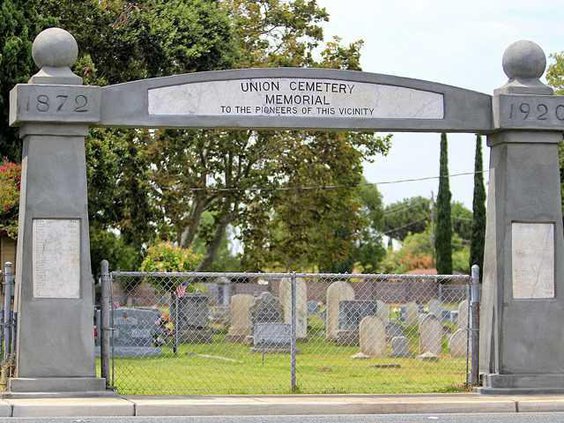Manteca’s oldest institution — the East Union Cemetery — is marking its 150th year next month.
To celebrate, the cemetery on the southwest corner of Louise Avenue and Union Road is “throwing open its gates” and inviting the community to explore the history of local ancestors and pioneers.
Activities on Saturday, Sept. 17, from 1 to 4 p.m. will include a self-guided walking tour, a “History Hunt”, similar to a scavenger hunt; a “Friends of East Union Cemetery” booth where you can purchase raffle tickets for gift baskets being raffled; view historic cemetery documents on display; and a “Tell Me about your Family” booth, where volunteers from the local Family History Center can begin research on some of your ancestors.
The event will include a BBQ hot dog lunch with drinks and cake for which donations will be “happily accepted."
Many settlers prior to East Union Cemetery being established were buried on family plots on their own land. Others were buried in an earlier cemetery at Mossdale.
Alvin Shedd, a county supervisor representing the Manteca-Lathrop area donated two acres of his land in 1872 for the purpose of establishing the cemetery.
In 1877, the cemetery was incorporated. It was originally named Union Cemetery but in 1955 the cemetery lost its official status with the state over paperwork issues. When the proper work was refiled the same year, the name Union Cemetery Association had been snapped up by another cemetery in Brentwood. The decision was made to add the world “east” to the official cemetery title at the time.
The name “East Union” fit in as the original Union School that had been to the west closer to Lathrop was moved to the corner of Union Road and Louise Avenue and rechristened East Union School. The intersection also was home to the Union Church.
A number of prominent early pioneers are buried in the cemetery.
The list includes:
*Joshua Cowell: He’s credited with founding Manteca in 1872 hence being referenced as “The Father of Manteca,” Cowell was the city’s first mayor and had a number of enterprises that sprung from the farm he established where downtown now is. His home was located where Bank of America now stands on the southeast corner of Yosemite Avenue and Main Street.
*Peter Clapp: He traveled around the Horn to join the Gold Rush. His brother Noah is also buried in the cemetery as well as his sister-in-law Louisa for whom Louise Avenue is named.
*Elmer S. Broadhurst: He was part of the first wagon train to come to California via the Sierra crossing near the present-day town of Truckee after the ill-fated Donner Party. Broadhurst also built the first wooden building in Sacramento.
*W.O. Lewis: He was present when the first American flag was raised over Monterey in 1846 by Commodore John S. Sloat.
*Major Simmons: He served in the war between the United States and Mexico.
*J.W. Bradley: An Indian Scout for General Custer who is among 16 Civil War veterans buried at the cemetery.
The first person buried in the cemetery was Adeline Reynolds whose grave is on the corner of Louise and Union just inside the fence.
The cemetery’s oldest headstone marks the grave of Elijah Borah.
Borah came to California to head to the gold fields in 1852 via the Isthmus of Panama where he contracted Panama Fever.
The day after he arrived in San Francisco, he was buried in the old Yerba Buena cemetery. He had died on July 10, 1852 at the age of 18 years, 43 months and 25 days.
Later when the cemetery was moved to make way for a building on the site, no one claimed his body. The body was left there.
Workers who raised that original building in order to erect San Francesco’s new city hall unearthed Borah’s body.
A notice of the body being found was placed in newspapers.
When relatives came across the notice, they claimed the body and reburied Borah at East Union cemetery.
The cemetery entrance arch dedicated on Memorial Day in 1920 in honor of area pioneers is a wealth of information about those that first settled in the area. Tablets on each side of the arch tell when each head of the household came to California between 1846 and 1879.
Sixty pioneers who came to the Manteca area between those years are buried at the cemetery.
To contact Dennis Wyatt, email dwyatt@mantecabulletin.com





